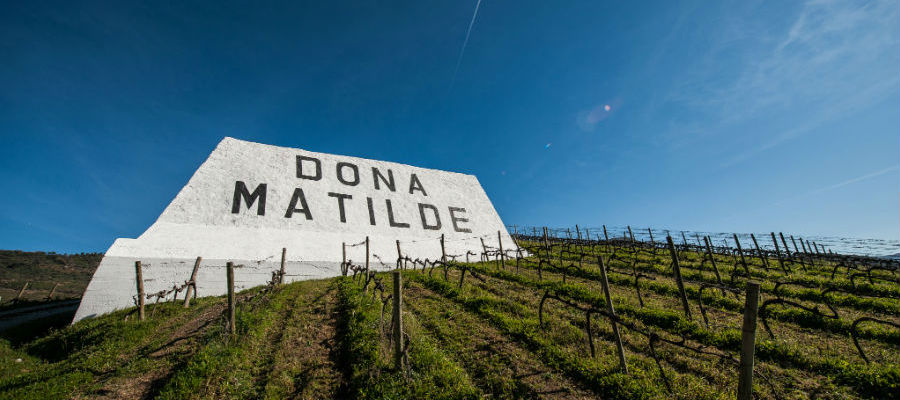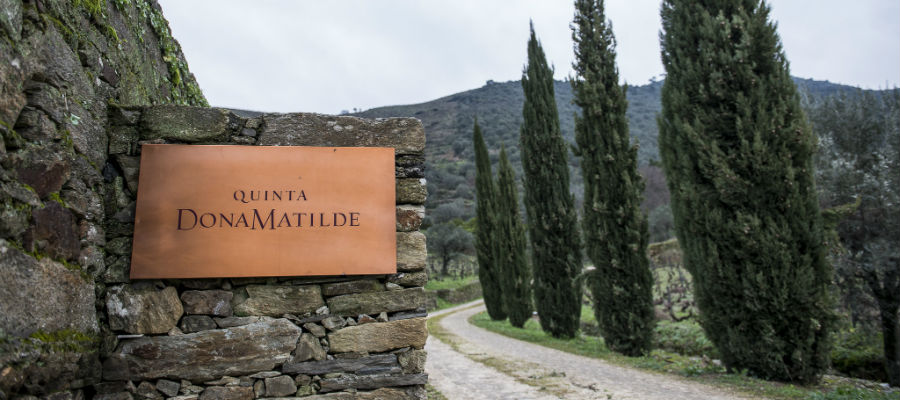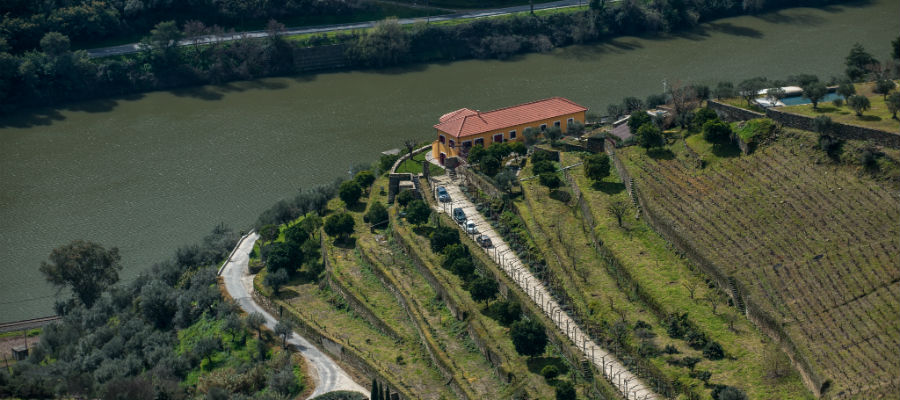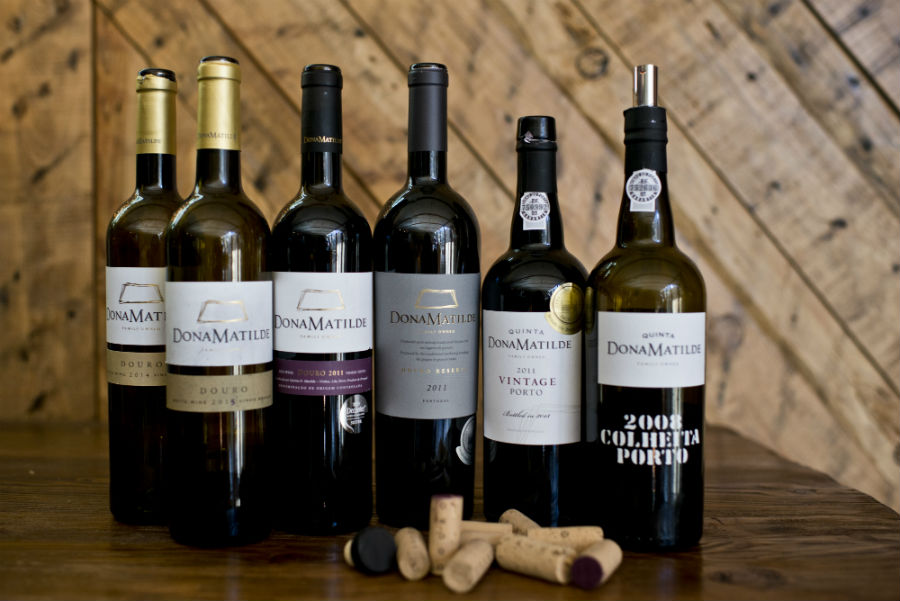Text João Barbosa | Translation Bruno Ferreira
At every curve of the Douro there seems to exist a Quinta or a special location. It’s a river with charisma, a valley where nature and man have joined in creation. In the twists and turns, heights and riverbanks, in the way of facing the sun and in the wide range of varieties is written a great book. Not everything deserves to be character or chapter, but it’s a sheaf.

Quinta Dona Matilde – Photo Provided by Quinta Dona Matilde | All Rights Reserved
The Quinta Dona Matilde has the right to enter history. If I use the book picture is because there’s a plot about this property. This domain belonged for four generations, to the Barros family, who bought it in 1927.
In May 2006, Manuel Ângelo Barros sold the Barros Group to Sogevinus Group. Quinta Dona Matilde was in the package along with the other assets. However, the wine is an imp and soon started to pester the entrepreneur who had sold the property.

Quinta Dona Matilde – Photo Provided by Quinta Dona Matilde | All Rights Reserved
Thus, Manuel Ângelo Barros and his family decided they had to go back to the wine. So many turns and they ended up buying back Quinta Dona Matilde at the end of 2006 – the remaining assets remained in Sogevinus.
The Quinta is located in Canelas, between Peso da Régua and Pinhão, within the initial demarcation area of Douro, established in 1756. All the wine area, 28 ha, is classified as Letra A (letter A) – the highest rank of the scoring table by the Instituto dos Vinhos do Douro e Porto – IVDP. In addition to the vineyards, Quinta Dona Matilde also has a traditional olive grove, an orchard, where stand out the lemon and orange trees, gardens and land left to nature. All this adds to the total of 93 ha.

Quinta Dona Matilde – Photo Provided by Quinta Dona Matilde | All Rights Reserved
Port wine has always been the destination of this Quinta’s grapes. A small part wasn’t fortified, but it was only for family consumption. In the 60s, the company produced a rosé and, in the 90s, a white – but always marginal. In family reincarnation, the Douro wine production is side by side with the production of Port Wine. Currently they are selling the grapes to the group The Fladgate Partnership.
Manuel Ângelo Barros says that he in no hurry to put the wines for sale, a rare decision in Portugal. Now they presented the 2011 vintage, related to reds. The presented white is from 2015. The tradition of this house was to make tawny ports and it will be, although the manufacturing of nectars with age indication is, for now, put aside. They decided to focus on the Rubies, namely vintages. The viticulture is in charge of José Carlos Oliveira and the enology in charge João Pissarra.
Dona Matilde White 2015 is a blend made with the grape varieties Arinto, Gouveio, Rabigato and Viosinho. The grapes were pressed and the wine was fermented in stainless steel vats.
Because of the mountainous terrain and a river cutting it, the Douro region is generous in variety of features. However, this wine surprised me, because I never would say that this is a nectar from this region.
I’m not a fan of making a sensory descriptors list, but it is justified to do so now, so that I can tell why I do not find the Douro in this white. It’s a wine where tropical fruit scents prevail, especially pineapple and passion fruit, combined with anise, a pinch of fennel, mandarin and a little lemon. In the mouth, the tropical nature stands out. It goes on and on and with freshness too.
And this that I’ve just written is good or bad? It’s a well-made wine – good! In terms of personal taste, it does not satisfy me. Then I wonder if this tropical and unpredictable profile is natural or if it was a will of the winemaker and the producer. If it’s solely the result of nature, I won’t speak a word. If it is intentional, I say I can see the reason for the Douro to produce wines with this profile.

The Wines – Photo Provided by Quinta Dona Matilde | All Rights Reserved
The Dona Matilde Red 2011 is clearly a Douro and exemplary of the year. It’s a blend of Tinta Amarela, Touriga Franca and Touriga Nacional – all from old vines, as indicates the producer. Part of the grapes were trodden in lagares. The wine aged for a year in wood. It’s sweet tooth without being sweet, soft, fresh and has good mouth-time. Minty aroma and a very smooth smoked holm oak firewood. Beautiful!
Dona Matilde Reserva Red 2011 is a blend in which the Touriga Nacional represents 50%. Then we have Touriga Franca (30%) and a bouquet of various other, mixed in an old vine, where the Tinta Amerela prevails. Part of the grapes were trodden in granite lagares. The wine aged 18 months in new French oak barrels.
It’s the Douro well shown: rock rose, mint, wood and holm oak wood smoke, black plum, blackberry jam, strawberry jam (calm and soft), figs, a little of blond tobacco and shale – all happily married. In the mouth continues to be Douro, fully occupies the space, smooth, with tannins laughing (without biting the skin), fresh and dry, long and deep.
Before moving to the generous wine, I want to note that these three wines ask for table. The reds give hopes of good evolution in the bottle.
The Quinta Dona Matilde Porto Colheita 2008 is not an ordinary tawny, halfway Ruby. It’s the result of less time of aging in wood. Three years in oak barrels and four in barrels of 600 liters.
It’s a happy and pleasant surprise wine. It has what is expected of a tawny and resembles a ruby. There are dried fruit, caramel, vanilla and a pinch of iodine. Along with the blackberry, plum, cherry, and strawberry jams… It’s deep and dense, long.
The Quinta Dona Matilde Vintage 2011 is further proof that the year was very generous to the Portuguese winemakers. It’s a blend of Tinta Amarela, Tinta Barroca, Rufete, Touriga Franca and Touriga Nacional. The wine aged two years in oak barrels, having then been bottled. There are again the many jams that liven up the vintage, from the nose to the mouth – deep and long.
The new Vintages are what they are, but they will also be something else. They should be drunk now or be saved? I do not know! I do not know if I’m alive tomorrow. I know that if I stay awake for more years, the wine will be better. Those who can, drink and save it.
Contacts
Quinta D. Matilde
Bagaúste
5050-445 Canelas PRG
Portugal
E-mail: info@donamatilde.pt
Website: www.donamatilde.pt




Leave a Reply